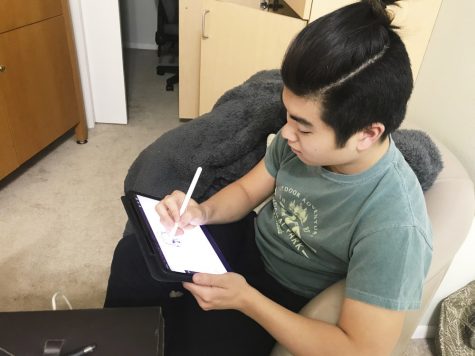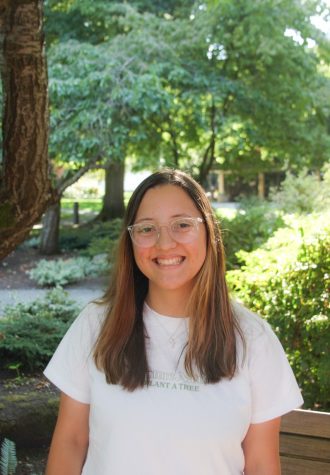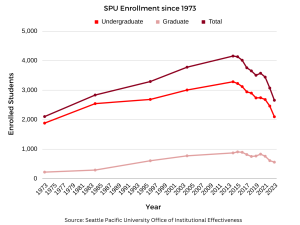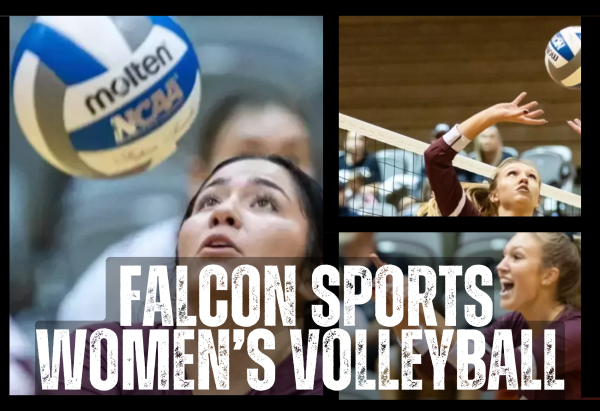Challenges amid transition to online art courses
Uncovering how the art department is handling COVID-19 changes
May 7, 2020

Josh Hyodo works on an art project on a tablet from his home. With the Art Center closed, art students have been adapting to their major with fewer resources available.
Expecting to spend her mornings walking to art class this spring quarter, sophomore Kayla Nasralla, a business administration major concentrating in international business, has been left disappointed and frustrated due to the COVID-19 outbreak.
What would have been a springtime stroll to the Seattle Pacific University Art Center has turned into a few steps from Nasralla’s bed to her desk. With her room transformed into an art studio, resources have become minimal.
Although the art department faculty is doing their best to help their students, Nasralla said, the art resources on campus are unavailable, making any art class more difficult and more expensive than usual.
“The paint, X-Acto knives, tape, paper — all the materials that are usually provided — I have had to buy. I probably spent around $100 on art materials that I wouldn’t normally have had to spend,” Nasralla said over a Zoom call.
The inaccessibility to art resources is a problem and, in addition to that, challenges rise with a decreased amount of community. Despite the circumstances, students are attempting to find joy and purpose amid these challenges.
The tactility of art is proving to prevent students like Nasralla in Art Foundations: Surface, and various other art classes, from being able to learn past the surface level of simply learning techniques in these online courses. She thoroughly enjoys learning about the deeper meaning behind art through human interaction.
With online classes essentially lacking that aspect, it has become an obstacle in her creative process.
“It’s been difficult … because this class is not meant to be on a screen, it has been harder to dive further into the ‘why’ and have only explored the ‘how-to’ side of things,” Nasralla said.
The ability to teach is not what is missing from the art department during this season. According to students and faculty it is the community that they are left longing for. Professor of art and SPU Art Department Chair Scott Kolbo admitted that meeting online is not ideal.
“The delivery of the how-to isn’t necessarily impossible, you know, it’s just less cool,” Kolbo said over a Zoom call.
Kolbo is doing his best to make the most of his time at home, but struggles to hide the disappointment in being away from campus and his students.
“We like teaching at a school like SPU because we get to spend time in real life with real people,” Kolbo said. “The little creative sparks that happen when people are together … are harder to recreate online.”
Not being surrounded by art and other people has fundamentally stripped away a main source of inspiration for many art students at SPU.
Freshman Uba Alcaraz, a visual communications major, has lost her motivation to create due to the chaos of this pandemic.
“With so much going on, and being so isolated from people, I haven’t felt very inspired for my art classes,” Alcaraz wrote in an email.
Sophomore Josh Hyodo, an illustration major, has also struggled to find the inspiration for his art which he attributes to being isolated from other people.
As someone who sees art in everything, Hyodo has always had a passion for illustrating people and incorporating that into his art at school. That is proving to be more difficult during this time.
“I want to go out and draw people, but there are no people,” Hyodo said over a Zoom call.
Despite this, he has been pleasantly surprised with the amount of time he is getting to work on his art. A lack of inspiration within his comfort zone has encouraged Hyodo to focus on other categories of art this quarter at SPU.
Hyodo has enjoyed watching the art community flourish in homes rather than diminish during this time. From music, to painting, to embroidery, people have invested much more of their time into art, according to the amount of art being shared on social media platforms.
“As soon as quarantine started, there was such a huge influx of art which is really cool,” Hyodo said. “It has, in a sense, forced people at home to simply sit and work on their art with no other distractions.”
Even with the absence of physical community, art students have still found a way to persevere and flourish through their art. Students are getting the opportunity to re-discover their love for art away from a classroom setting while still getting credit.
Nasralla has begun designing her own stickers. Alcaraz has found a new love for viewing art.
“Because I have not been creating I have had more time to appreciate art as a viewer as opposed to being an artist,” Alcaraz said.
No matter the resources (or lack thereof), the conditions, or the amount of community they have access to, art students and faculty have adapted.
“Artists are always just kind of living off the breadcrumbs that fall off the table of society,” Kolbo said.
The Art Department along with its students have taken the breadcrumbs they have been given and have attempted to make a whole meal out of them.
They have proven that, although the Art Department is being challenged, they have not been defeated.
“Art always exists, no matter what the conditions are,” Kolbo said.


























































































